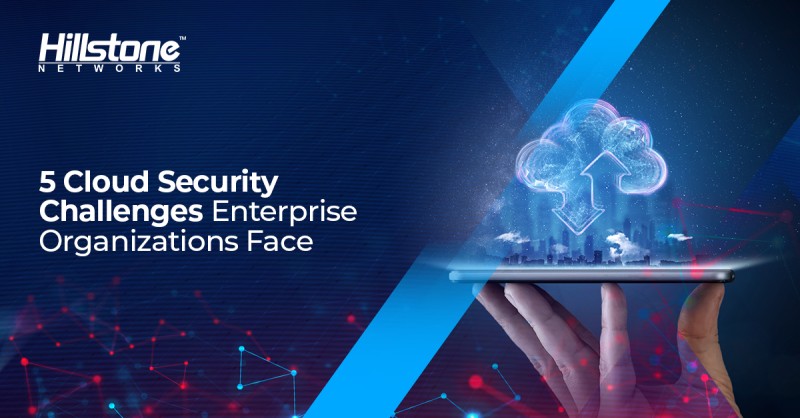Moving into the cloud or expanding cloud services, gives businesses the scalability and flexibility they need to stay competitive in the modern landscape. However, the cloud also presents new security hurdles that can seem daunting. Without a clear plan, however, cloud infrastructure can become difficult to maintain and easy to attack. But the good news is that getting to know them now can help you adopt cloud technologies confidently and securely for the long term.
As your business considers and builds its cloud security and operations strategies, keep these five challenges in mind.
1. Cloud Computing Expertise
Even enterprises with full IT, operations and security staffs may not have the proper expertise to secure cloud operations, since these technologies are often structured differently than on-premises technologies that achieve similar business goals.
Enterprises should consider several ways to address the question of skills. They must train their existing staff thoroughly in the cloud platforms being adopted. They can hire staff or engage with consultants who already have experience in designing, implementing and using cloud platforms that suit their needs. And, no matter how they choose to address the staffing challenges, they must choose cloud security products and frameworks that streamline deployment and monitoring, thus making the most of the expertise available to their company.
2. Asset Control
The cloud offers a new frontier of flexibility and scalability, since cloud instances can be created quickly without the expense of purchasing and connecting new hardware. However, this can lead to a serious challenge of asset management, since knowing what’s on the network is no longer as simple as counting and documenting physical devices. In addition, it is also crucial to have visibility into virtual machines: which ones exist on the network, what services they are intended to provide, and how they are supposed to interact with other assets on the network, both physical and virtual.
To confront this challenge and remain secure, a business needs to:
- Implement technologies that help track what cloud instances are being created and maintained
- Know what services are running on those instances and secure those services
- Know whether those instances are performing suspicious activity on the network
3. Proper Configuration
Today’s mature cloud services offer a broad range of security options, but it can be a challenge to take advantage of them in a way that provides your business with the functionality and security it needs. Though the data security goals of cloud security and on-premises security are similar, the ways of reaching those goals are different. Without proper configuration, and ways to ensure that every cloud service is using a vetted and secure configuration, a business may find itself with a cloud infrastructure that is both difficult to manage and easy for attackers to enter.
Proper cloud configuration requires expertise, people who know the business’s needs, the capabilities of cloud technologies, and how to configure them securely. Confronting this challenge also requires technology that automates those secure configurations once they are designed, in order to make it as easy as possible to do work securely. A cloud security framework should also allow businesses to move virtual instances with their security features intact, in order to make scaling and changing with business needs as easy as possible. And, for maximum efficiency, these security management tools should exist in a unified platform. That makes it as easy as possible for the security team to review configurations, tune settings, deploy assets, and manage all aspects of security.
4. Isolation of Systems
Whether your business is building a private cloud infrastructure or building infrastructure to offer a cloud service to the public, it matters that each instance and service is isolated, in order to minimize data compromise and exposure. Traditional networking equipment and firewalls are useful for segmenting and isolating physical hosts. However, isolating cloud instances requires technologies such as microsegmentation, which allows security teams to isolate virtual network assets based on sensitivity or workflow, using software-defined networking.
Strong isolation helps reduce the damage caused by a compromised system: it can make the difference between a contained incident and a sprawling data breach that includes multiple parts of the business, or even multiple clients in the case of a multi-tenant service. Cloud security infrastructure must be purposefully designed to strengthen the barriers between instances. It should also be able to log traffic between cloud instances and attempts to break through isolation mechanisms. Taken together, these provide the data and context necessary to determine whether traffic indicates legitimate business or an attack.
5. Monitoring
Cloud systems must be designed to ensure that each instance and service is providing usable log data about users, actions, traffic, and security events. A business needs the expertise to understand the data, and see patterns in it that indicate security issues that require remediation. But, on the grand scale of modern cloud services, expertise is not enough to make prompt response and mitigation a reality. For so much information to become understandable and actionable, a business also needs the technical capabilities and automation to take in, organize and help the security team contextualize the massive amounts of event data created by a modern cloud infrastructure.
CloudHive Can Help
When it comes to cloud security, knowledge is power. Learning the challenges businesses face as they move into the cloud; taking the right security precautions; and building them into your cloud transition or expansion plans as early as possible can help you move into the cloud with confidence.
Enterprises trust Hillstone CloudHive to help them face these challenges and secure their cloud infrastructure now, and for the future ahead. Learn more about how CloudHive can help keep your cloud instances secure and its latest features.



